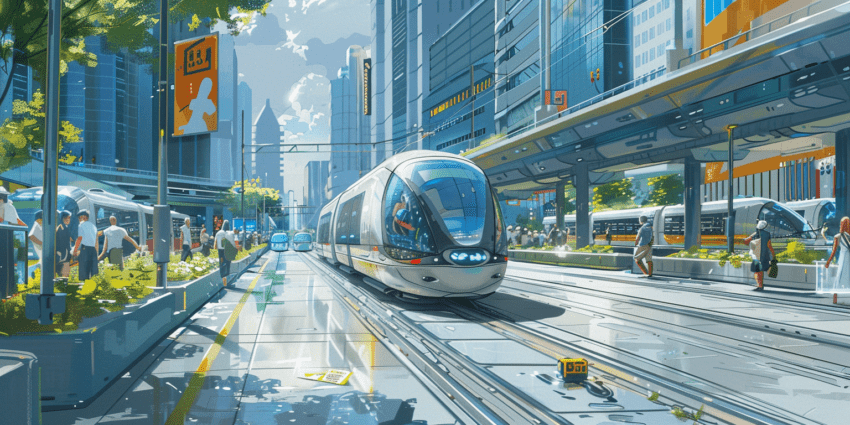
Transportation is the lifeblood of modern society, connecting people and goods across the globe. Its development has been a testament to human innovation, evolving from the simple wheel to the high-speed trains and electric vehicles of today. The choices available cater to different needs, from cost-effectiveness to speed, environmental impact to convenience. Understanding this broad spectrum is essential for individuals and businesses alike as they navigate the complexities of movement and logistics.
As cities grow and technology advances, the transportation landscape continues to change. Electric cars are gaining traction as a sustainable alternative to gas-powered vehicles, while bike-sharing programs promote health and reduce traffic congestion. Public transport systems are also adapting, with cities investing in smarter, cleaner, and more efficient services. These shifts reflect a growing awareness of the environmental implications of travel, as well as a desire to make transit more accessible to a diverse population.
Within this dynamic arena, travelers have an unprecedented array of options. Each mode of transport has its unique set of advantages and trade-offs, making the choice of how to get from point A to B more nuanced than ever. Sophisticated apps and platforms provide real-time data to help individuals make informed decisions that align with their priorities, whether it’s minimizing travel time, maximizing comfort, reducing carbon footprint, or sticking to a budget. This variety ensures that the wheels of progress keep turning, offering people the freedom to choose their path in an ever-connecting world.
Evolution of Transport Modes
Transportation has drastically transformed from human-powered modes to technologically advanced systems, significantly enhancing mobility and influencing economic and social structures worldwide.
Ancient Innovations
Early humans relied on walking as their primary mode of transportation, but the need for more efficient travel led to a series of groundbreaking innovations. The wheel, believed to have first appeared in ancient Mesopotamia around 3500 BC, revolutionized transport by enabling the creation of chariots and carts. These vehicles facilitated trade over greater distances and supported the growth of civilizations by mobilizing armies and resources.
- Domestication of animals: Horses, camels, and oxen provided faster and more reliable transport means, becoming essential parts of human society.
- Sailing: Around 3100 BC, the Egyptians began using boats with sails on the Nile, significantly improving trade and communication.
Industrial Revolution Advancements
The Industrial Revolution in the 18th and 19th centuries marked a significant leap in transport technology. The steam engine was a pivotal invention, seeing its first major application in railways. By 1804, the first successful steam-powered locomotive was hauling coal, and just decades later, networks of railways spanned across countries.
- Steamships: Transitioning from wind-powered sailboats, the introduction of steamships around the 1800s enhanced sea transport.
- Internal combustion engine: It paved the way for the development and mass production of automobiles, forever changing personal and commercial land transport.
Modern Developments
The transport sector in the 20th and 21st centuries has witnessed rapid developments, with a focus on speed, efficiency, and sustainability. The Wright brothers’ first powered flight in 1903 led to the advent of air travel, shrinking the globe and facilitating international relations. Vehicles became increasingly sophisticated, with electronic systems and computers enhancing safety and navigation.
- Electric and hybrid vehicles: A response to environmental concerns and fossil fuel limitations, these technologies represent a shift towards sustainable transport solutions.
- High-speed trains and maglev systems: They embody the pursuit of reducing travel time and increasing passenger comfort.
Throughout these phases, the evolution of transport modes has been instrumental in shaping societies and economies, reflecting the ingenuity and continuous quest for improvement in human civilization.
Comparing Transportation Means
When selecting a means of transportation, it’s crucial to consider factors such as speed, cost, environmental impact, and accessibility.
Efficiency and Speed
Transportation modes exhibit varying degrees of efficiency and expedience. For example:
- Aircraft: Cover long distances quickly, ideal for international travel. Not as efficient for short commutes.
- Trains: Provide consistent speeds and timely arrivals. High-speed trains offer rapid inter-city connections.
- Cars: Offer door-to-door convenience with variable speeds influenced by traffic conditions.
- Bicycles: Highly efficient for short distances in urban areas, with no fuel costs or emissions.
Cost Implications
The cost of transport can significantly affect one’s choice:
- Public Transport: Generally more affordable with options like buses and subways. Monthly passes further reduce expenses.
- Private Vehicles: Involve initial purchase price, maintenance, fuel, and insurance costs. Offer independence but can be expensive.
- Ridesharing: Cost-effective for those without a personal vehicle. Prices fluctuate based on demand.
- Cycling/Walking: Incurs little to no cost, barring initial investment and basic maintenance for bicycles.
Environmental Impact
Transportation contributes to environmental changes:
- Electric Vehicles: Produce lower emissions compared to fossil fuel vehicles.
- Mass Transit Systems: Reduce individual carbon footprints by moving many people simultaneously.
- Cycling and Walking: Zero emissions, promoting a cleaner environment.
- Aviation: Accounts for a significant share of carbon emissions in the transport sector.
Accessibility and Inclusivity
Access to transportation can bridge the divide:
- Public Transport: Often designed to be inclusive, with accommodations for the elderly and those with disabilities.
- Private Transport: Can be adapted for personal needs but may pose challenges for some individuals.
- Car Sharing Services: Offers increased accessibility through flexible pick-up and drop-off points.
Non-motorized Options: Require infrastructure such as bike lanes and pedestrian paths to be truly inclusive.